Inside the Coast Guard’s Mass Rescue of Stranded Ice Fishermen on Wisconsin’s Sturgeon Bay
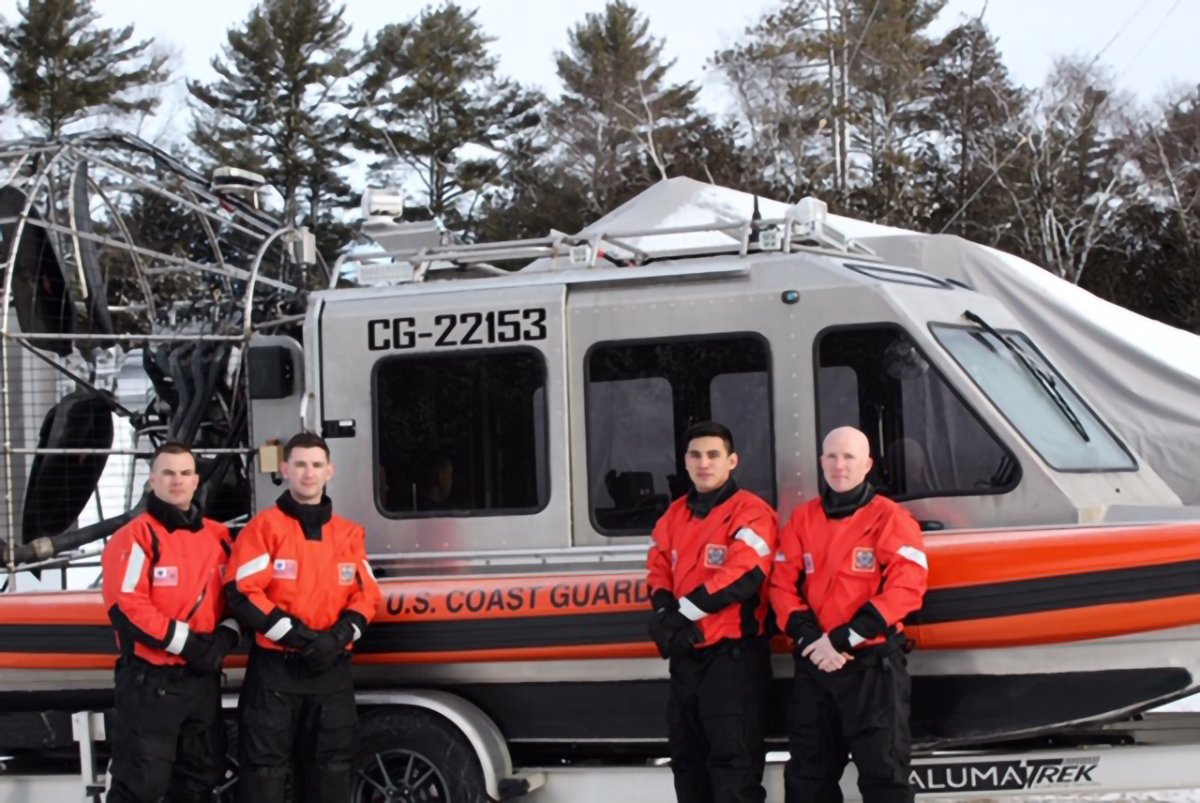
From left to right: Boatswain’s Mate 3rd class Andrew Kappler, Machinery technician 2nd class Michael Padden, Boatswains mate 2nd class German Bahena Cardozo, Boatswains mate 2nd class Dennis Whartnaby. Photo courtesy of Andrew Kappler/USCG.
A large section of ice broke loose in Wisconsin’s Sturgeon Bay, just off of Lake Michigan, on Feb. 4. The recent warm weather combined with a strong eastern wind caused the ice to break off, stranding 66 people who were ice fishing at the time. Members of the US Coast Guard 9th District, the Wisconsin Department of Natural Resources, and the Brown County Sheriff’s Office sprang into action to save the stranded anglers before the ice could dump them into the cold waters of the bay.
Coffee or Die Magazine sat down with three of the four US Coast Guardsmen who were responsible for rescuing 18 anglers over the course of the massive effort: Boatswain’s Mate 3rd Class Andrew Kappler, Machinery Technician 2nd Class Michael Padden, and Boatswain’s Mate 2nd Class German Bahena Cardozo. Boatswain’s Mate 2nd Class Dennis Whartnaby was unable to attend the interview because he was on duty at the time, but he was present during the rescue effort.
The USCG crew was getting ready to head home from their station when the alarms sounded, signaling them to prepare for rescue efforts in the bay area. This isn’t their first rodeo when it comes to winter rescues — it’s the crew’s third season of ice rescue duties at this station. Kappler immediately started thinking through the possibilities that can arise in winter water rescues.
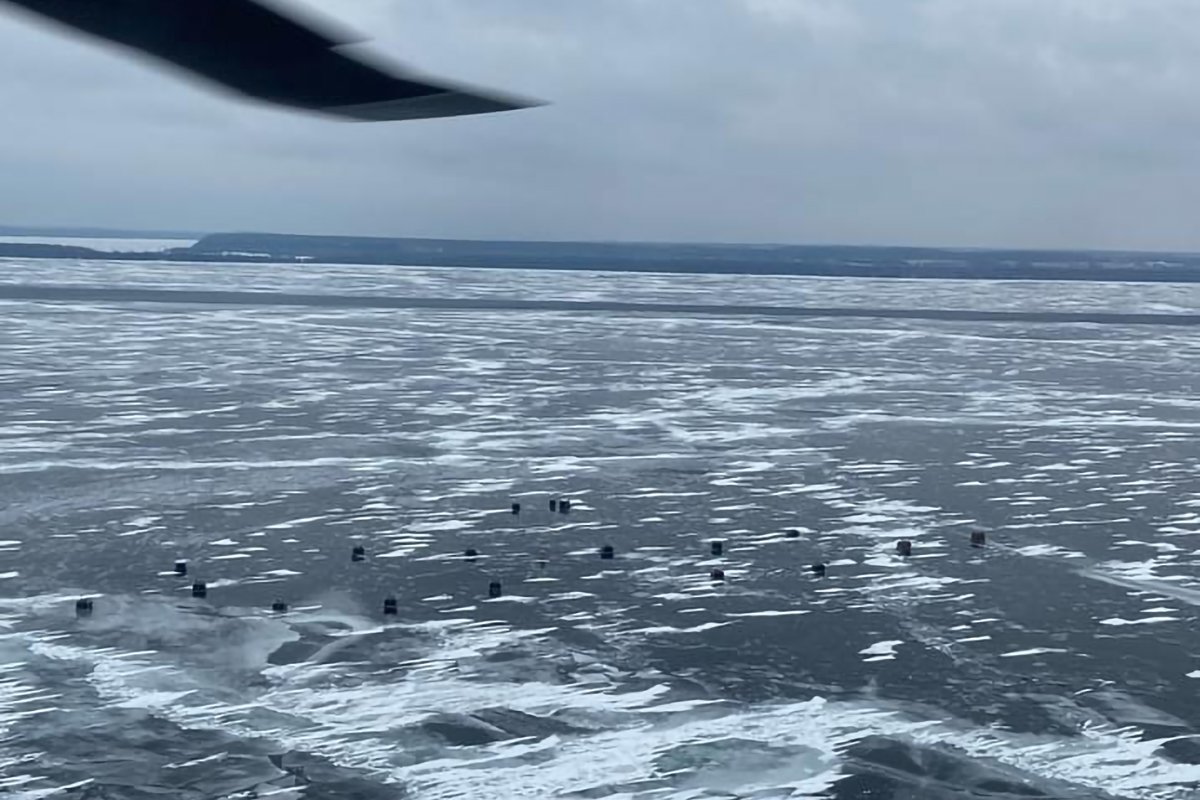
“When we hear the alarm go off during the winter, one of the things that immediately crosses our minds with ice rescue, as opposed to our normal search and rescue operations on the water is, are we going to have a lot of people that were going out there,” Kappler said. “Are we going to have to deal with hypothermic patients? How many people are stranded? Where are they?”
“This is where all the training we do comes into play,” added Padden.
The crew threw on their dry suits and gathered essential rescue equipment, hooked up the airboat on its trailer to the truck, and sped to their insertion point. While on the way, they were informed by dispatch that the stranded anglers were on a chunk of ice approximately 12 square miles in size and that there were at least 45 people involved. The anglers were located somewhere in the crew’s western area of responsibility near Sherwood Point.
“Oh man, this is big. This is a lot of people to rescue, and we’re working against time here,” Kappler recalled about his thoughts en route. “When the ice broke apart like that, you have no idea whether or not the ice is going to stay stable or if it’s going to keep breaking up. [If it falls apart more] then people are going to end up in the water — so it adds a sense of urgency.”
Talk about #GreatLakesWinterSafety! Dramatic photos taken today by an Air Station Traverse City aircrew of the #teamwork among rescuers of 66 anglers adrift on ice floes on #LakeMichigan's Sturgeon Bay. Read the news release at https://t.co/9y4g1JUCOe pic.twitter.com/Q9tUCmFCVG
— USCG Great Lakes (@USCGGreatLakes) February 5, 2021
Only 20 minutes after the alarms rang out, the Coast Guard crew was launching their airboat from the insertion point, a boat ramp in Potawatomi State Park. As they flew across the ice still attached to land, a rapidly approaching winter storm loomed large in their minds.
Not only did they need to rescue people before the ice could further disintegrate, but they needed to get them out before the incoming storm could limit visibility. Thankfully, their airboat’s engine pushes approximately 800 horsepower, giving them the power they need to make speedy rescues.
The gap between the ice shelves became more apparent as the crew approached their assigned area, while other rescuers worked zones designated by the combined chain of command. All three crew members told Coffee or Die how, as they got closer, the gap was initially about 50 yards across and stretched to the right and left of their point of crossing “as far as the eye could see.”
Landing on the other side of the water gap, the crew looked behind them to see that it was rapidly growing, indicating that the ice chunk was rapidly moving away from land. They made sure to park far enough away from the ice shanties used by the anglers for shelter while fishing. Parking too close would risk the weight of the airboat, personnel, anglers, and ice shanties combining to break and drop everyone and everything into the water.
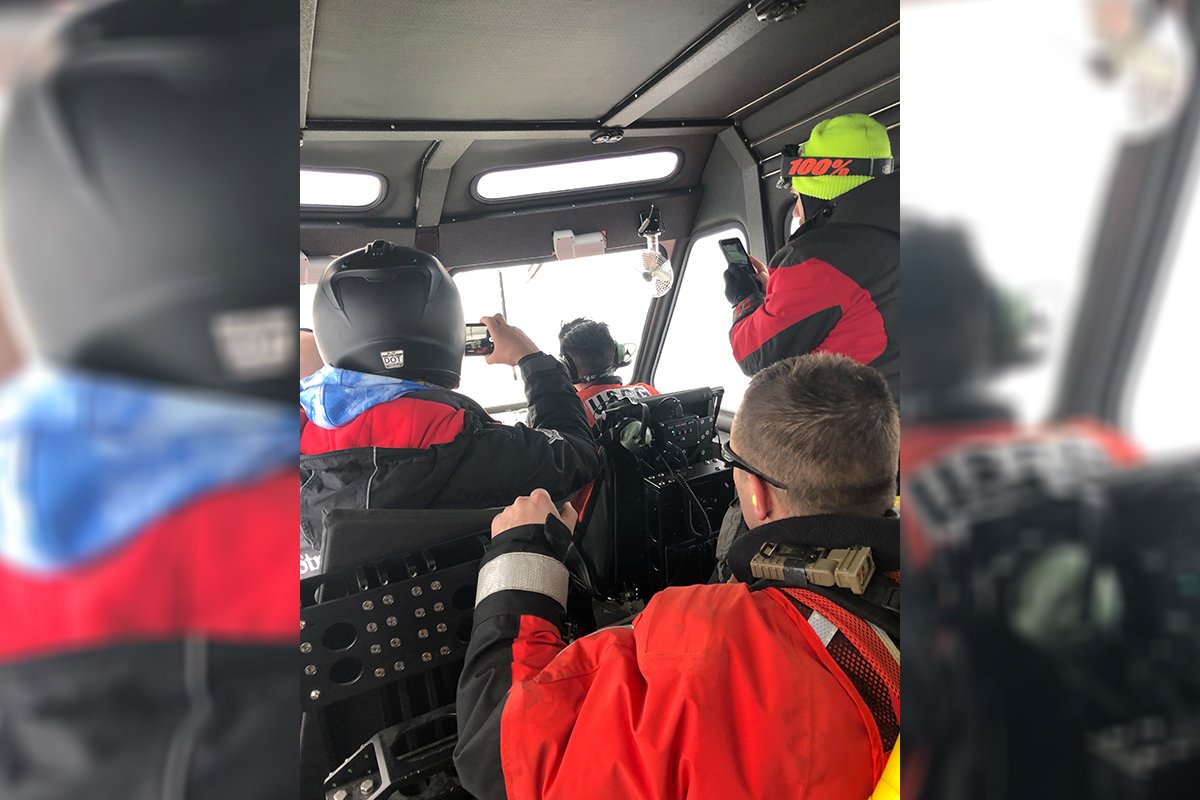
The first group they came into contact with reported that they were fine and encouraged them to keep moving to the groups that were farther away. The Coast Guardsmen continued and located a group of 10 anglers, none of whom were suffering from the elements yet. They loaded them into the airboat and took the party to a collection point where other rescuers were waiting to treat and warm up anyone who needed it.
As soon as the 10 were unloaded, the four crew members headed back out and located a second group of five anglers. While crossing the water gap the second time, they noticed the distance between the ice shelves had doubled, if not tripled in size. Mother Nature had confirmed the crew’s concerns about how quickly the dangerous situation was evolving.
Another bad sign appeared. Water was seeping through the ice as they walked to check all the fishing shanties to make sure no one was sleeping inside one or was simply unaware that the ice had broken off.
“While we were walking around out on the ice out there, we were actually seeing water under our feet that was coming up through the ice,” said Kappler. “When you see that you’re like, ‘Okay, time is definitely of the essence here.’”
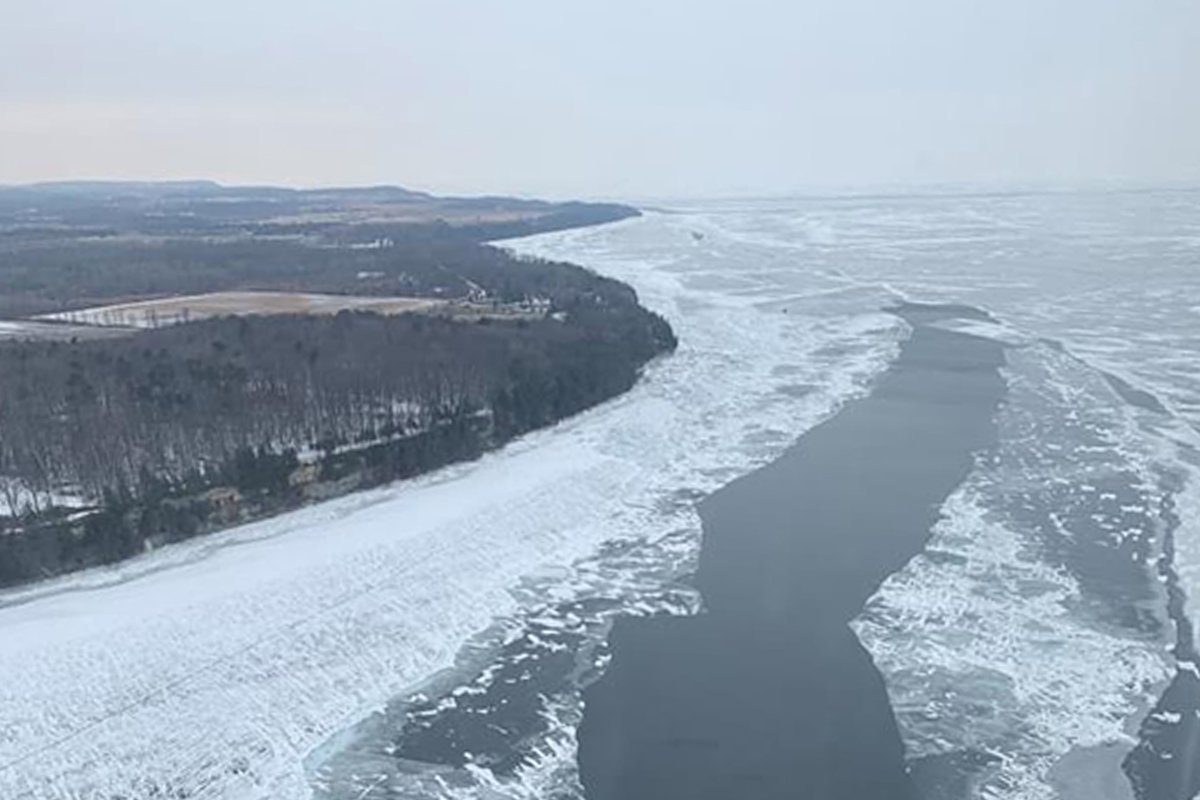
By their third trip across, Padden said, approximately 25 yards of the separated chunk of ice was breaking apart as the airboat traveled across it before landing on solid ice again.
After three trips, the Coast Guardsmen had personally rescued 18 stranded fishermen. In total, over approximately four hours, the partner agencies rescued 66 people from a potential cold-water grave. Bahena Cardozo talked about how important it was for the crew to know they had partner agencies out there with them, helping distribute the workload of the rescue effort.
“We had helos checking every ice shanty scattered around the ice floe, and telling us where they’re at,” Bahena Cardozo said. “Just knowing that we have other assets helping us — it was just a huge relief. It took some weight off our shoulders.”
At the end of the day, the trio said how important these rescues are to them. They have internalized a solemn oath to the people in need of their help: “USCG District 9 Search and Rescue responders should treat every potential victim as one of our own family members.”
“These people that we go out and rescue here, they could be our neighbors, they could be the cashier at the store that checks us out of the grocery store,” Kappler said. “It means everything in the world to us to make sure that we bring them home safe and do everything in our power to do that.”
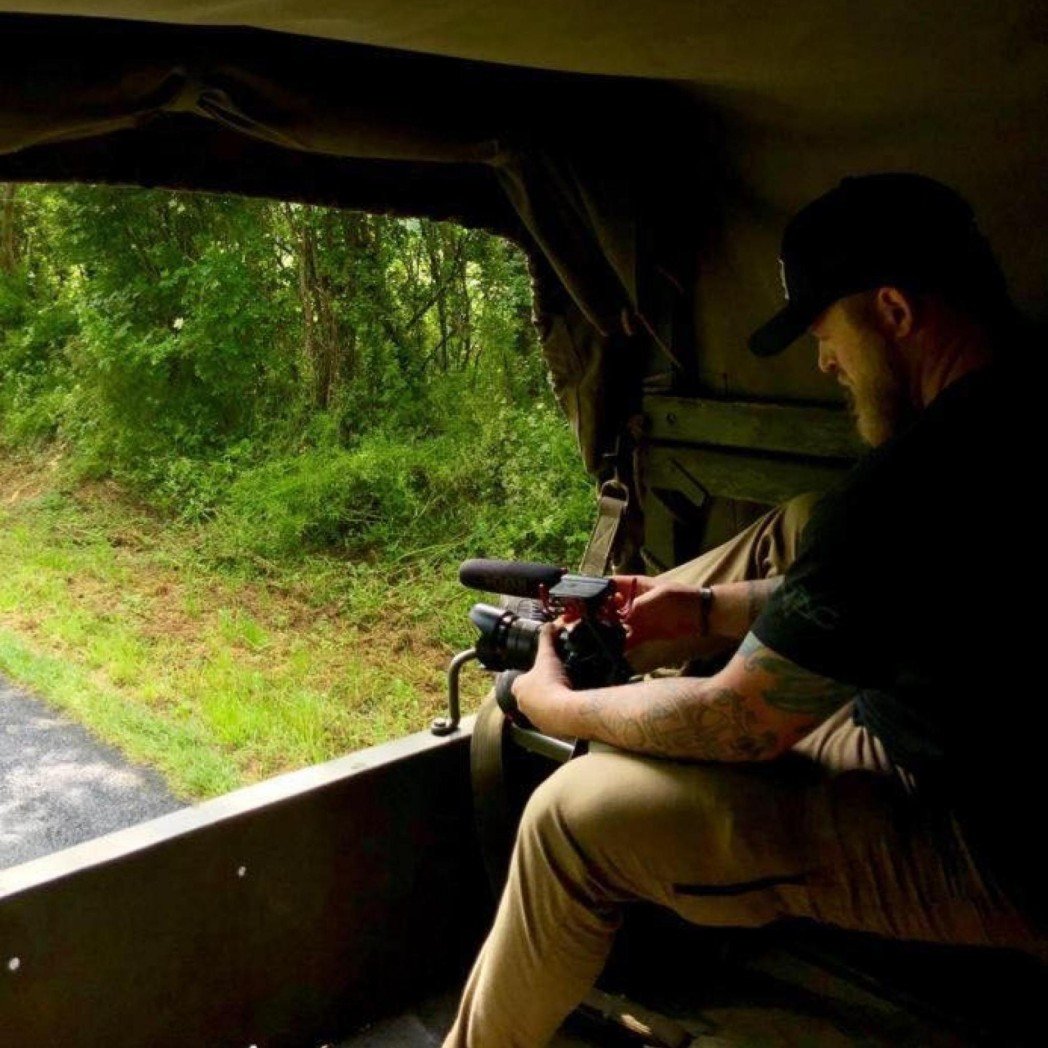
Joshua Skovlund is a former staff writer for Coffee or Die. He covered the 75th anniversary of D-Day in France, multinational military exercises in Germany, and civil unrest during the 2020 riots in Minneapolis. Born and raised in small-town South Dakota, he grew up playing football and soccer before serving as a forward observer in the US Army. After leaving the service, he worked as a personal trainer while earning his paramedic license. After five years as in paramedicine, he transitioned to a career in multimedia journalism. Joshua is married with two children.
BRCC and Bad Moon Print Press team up for an exclusive, limited-edition T-shirt design!
BRCC partners with Team Room Design for an exclusive T-shirt release!
Thirty Seconds Out has partnered with BRCC for an exclusive shirt design invoking the God of Winter.
Lucas O'Hara of Grizzly Forge has teamed up with BRCC for a badass, exclusive Shirt Club T-shirt design featuring his most popular knife and tiomahawk.
Coffee or Die sits down with one of the graphic designers behind Black Rifle Coffee's signature look and vibe.
Biden will award the Medal of Honor to a Vietnam War Army helicopter pilot who risked his life to save a reconnaissance team from almost certain death.
Ever wonder how much Jack Mandaville would f*ck sh*t up if he went back in time? The American Revolution didn't even see him coming.
A nearly 200-year-old West Point time capsule that at first appeared to yield little more than dust contains hidden treasure, the US Military Academy said.












